 Is racist white supremacy behind "Aryan" claims, a term Goebbels, Himmler, and Hitler appropriated from India and so abused that the term can probably never be redeemed?
Is racist white supremacy behind "Aryan" claims, a term Goebbels, Himmler, and Hitler appropriated from India and so abused that the term can probably never be redeemed?According to the blog Aryan Buddhism, "Theravada [the earliest existing form of Buddhism] is Materialism, not Buddhism." What then is Buddhism? It is what the blog calls "Aryan Buddhism."
Therefore, the early Buddhists compiled the Abhidharma texts that speak in absolute and ultimate terms. There is no self. What is there then? Ultimately speaking there are particles (kalapas, the characteristics of form) and mind (cittas, consciousness moments).
Five Aggregates
Another approach is to explain "being" as Five Aggregates of Clinging: There is form (body, kalapas), feeling (sensation), perception (recognition), volition (mental formations, the most important of which is intention), and consciousness (cittas and cetasikas, mental factors). What we refer to as myself, yourself, an essential entity undergoing rebirth is not real in the ultimate sense [it certainly is in the conventional sense] is always in terms of the aggregates of existence. We speak of "my body, my feelings...my awareness." But if we were to look closely -- with a mind purified by "right concentration" (which the Buddha defines as a mind capable of entering the first four absorptions, jhanas, at will) -- we would not find an autonomous, independent self.
Dependent Origination
We would find the other approach to explain being, namely, Dependent Origination. Our sense of self, these physical and mental aggregates (materiality and mentality) are dependent. They all arise depending on conditions. This is directly observable, directly knowable, directly open to verification. Of course, verification to our scientific culture means empirical-impersonal "data." What Buddhism, particularly the ancient meditative traditions of Theravada Buddhism, is concerned with is personal empirical "experience."
There is no dogma, nothing to take on blind faith. But that does not keep the blog from lambasting the great American scholar-monk, Bhikkhu Bodhi. Liberation is an experience. Unfortunately, for many Buddhism has become a religion to identify with rather than what the Buddha set out -- a path to practice. There is a verifiable-faith (saddha), confidence or conviction, in those who have seen this Dharma, namely the Buddha and the enlightened or aryan ("noble," "accomplished," "attained") Sangha.
It should be noted that Bhikkhu Bodhi rarely speculates in his translations. What he commonly does is reference and bring forward Buddhist commentarial literature, most of which has not been translated widely disseminated. If there is an implication and it is noted as such, one would do well to look at the source material, the ancient commentaries, rather than at the modern messenger.
In this way, one is easily able to follow the thread teased out over centuries. Commentarial work is not fiat (as in currency, military) -- the whimsical dictate of some authority or a specious theory constructed by an idiosyncratic commentator.
It follows a principle laid down by the Buddha, reconciling the texts regarded as authentic scripture handed down by oral tradition. That principle is laid out as a means of testing claims: Does it accord with the rest of the teaching? Question it, examine it, investigate it. Do not simply accept it on authority or dismiss it out of hand.
Conventional vs. Ultimate Truth
Conventionally, there IS a "self." We must improve ourselves, develop ourselves, examine ourselves, behave ourselves, help ourselves, and help others to become free of suffering and experience nirvana. But what is the nature of this "self"?
Ultimately speaking, it is empty. That is to say, it is not what it seems. What does it seem? It seems permanent. It seems capable of satisfaction. It seems personal.
And that verification is wholesome, liberating, and leads to enlightenment. The wrong view held by Vedic Brahmanism (and essentially every other religion/spiritual philosophy in the world) is that there is an eternal "soul" or that one is merely material and exists now to be annihilated at death. Both are mistaken views.
Yes, BOTH are mistaken views. Buddhism is the Middle Path that avoids these two extremes. These views are not mistaken because the Buddha spent so much time and exerted so much effort to establish people in the right view of selflessness (anatta).
They are mistaken and anyone who attains even the first stage of enlightenment (stream entry) is perfectly convinced of that, has verified it, has experienced it. Life and our existence is not what it seems! The whole of Theravada Buddhism promotes this understanding -- but only if one can take the first baby step in distinguishing two forms of speaking, conventional truth and ultimate truth.
Physics and Psychology Examples
The distinction is easy today. Most educated people will have heard of Newton and Newtonian physics as distinct from Quantum physics. Newtons laws -- which may or may not be true but are taken as such and used as the basis for ordinary or classical mechanics. These are the "physical laws" of how physical things operate at the level of things. So from a Newtonian view a solid table is a solid.
But, ultimately, from a Quantum perspective, that "solid" is mostly empty space. A solid table is not a solid. Contradiction! Contradiction? There is no contradiction at all. It certainly appears solid, but by definition and experiment, it is revealed to have far more space than solidity, the space being the gap between atomic particles and subatomic particles. Newtonian axioms do not apply, the math does not work, at the atomic level. When things are that small, at the level of quanta, a whole new physics, a whole new math is needed to describe and predict movement.
To give a psychological example, we may be asked to explain our motives. And we may say what we honestly think is motivating us. But an experiment reveals that we are mistaken; we are, in fact, being motivated by something else. For instance, why is a commercial effective? Why do we choose to buy something being advertised? We choose it because it is a value, we have rationally examined it as necessary or useful for us, and that decision is in line with our ethical standards, rights? Not a chance. If this were the case, commercials to be effective would talk about the ingredients and remain logical.
Caveman Peter discovers that sex sells wheel invention ("Family Guy")
Effective commercials are appeals to emotion, status, irrationality. Since caveman days, women -- which have nothing to do with the item being sold -- help sell things by simply associating them with it. Today a bikini-clad beauty sits on the hood of a car as she once sat next to a wheel. If we were being rational and unemotional, this appeal would not work. It would insult us and help us see that we are being manipulated. Things appear one way, but experience reveals they are quite another. No matter what we believe, the truth is the truth. And a delusion shall not set anyone free.
In a conventional sense, there is a self, a carrier (or at least an inheritor of the results) of karma, those profitable and unprofitable deeds engaged in that bear their result. Could the Aryan Buddhism blog really be suggesting there is a self, as Mahayana suggests and as Vedic Brahmanism (as commemorated in modern Hinduism) asserts without hesitation?
What is real? Nirvana is real. Nirvana alone is the "unconditioned element." All other elements (dhatu) are conditioned. Theravada does not assert the ultimate reality of anything but nirvana. It is true that particles and moments are what is really behind the phenomenal world we see and experience.
But they themselves do not constitute a reality that can be relied on. They are radically transient, suffering, and devoid of identity (empty, not-self, impersonal). Nothing comes into being, nothing goes out of being, other than ignorance. Suffering is based on ignorance; other than that, everything is okay right now.
On countless occasions Theravada doctrine rejects Materialism, which ends in Annihilationism, just as it rejects Eternalism that posits the existence of an eternal soul, which is exactly what the Buddha and the commentators were explaining as ultimately nonexistent. Something may exist. But it does not constitute a self. It is not real. It is not worth clinging to. It is not personal.
One has to wonder what is being asserted. There is a self? All that the Buddha said -- so unpopular and unfathomable but exactly needing to be understood and penetrated in order to stop clinging and be liberated from ignorance and suffering -- is being rejected? The Buddha says there is a soul, and the soul goes on to a happy heaven called Nirvana? This is certainly a popular view. We can call that heaven the "Pure Land." We can get there by devotion and vows. We can live forever (even though we cannot live for two consecutive moments) and call ourselves Vedic Brahmins or Christians. What would be the difference?
Is it very nice if people have a sincere misunderstanding of the Awakened One's (Buddha's) profound teachings (Dharma). But it is offensive to find argument for argument's sake or to hear someone decry others' sacred beliefs or, worse, to see someone assert the superiority of one race (say, the Caucasian) over another (say, the Asian). We are not personally familiar with the "Aryan Buddhism" blog's founder. We can only hope that we have mistaken his states with his traits.
"Life is Beautiful" (La Vita è Bella)
Old Fashion Racism?
Two continents meets and are separated by the Caucasus Mountains. Why would latter-day racists be ashamed of Buddhism but proud of "Aryan Buddhism."
The Buddha was aryan (a "noble one," which meant a warrior-caste royal but came to mean noble in the sense of accomplished, enlightened, purified by actions not birth). He was very likely Central Asian (not Nepalese). Central Asians (such as Afghans, Iranians, Tajiks) look white, live near the Caucasus. But they have golden skin and are more Asian than European. The Buddha went East toward South and Southeast Asia (not West toward Greece, Turkey, and Israel, not south toward Egypt, not north toward Russia or Sumeria). He was culturally "Indian" only because India was culturally dominant in his adjacent country (the Land or Province of the Shakya clan).
The Buddha was not a racist. He did not assert the superiority of any race over another. His eyes were blue, his skin golden. The Nazi/German use of the word "aryan" makes us at Wisdom Quarterly ashamed. Discovering the Buddha's Central Asian roots holds out the hope of uniting Caucasians (Whites or Pinks) and Asians (Yellows). The darkness of many Indians, then as now, holds out the hope of fully including Africans (Blacks). The very-very early appearance of Buddhism in America as well as the similarity of non-East Indian "Indians" (with Siberian, Tibetan, Mongolian roots) means Browns and Reds are included. We have the whole rainbow brotherhood of humans. Of course, the colors are only a stand-in reference to genetic "race" we, like the Nazis, imagine is a real or scientific delineator of human beings. "Race" is not a scientific term. But it is a real cultural phenomenon that gives us racism. There are cultural, national, sociological, complexion, and appearance differences, which are more individual than familial (phenotype vs. genotype), and people make mountains out of these mole hills.
 As American Buddhists (speaking on behalf of everyone at Wisdom Quarterly without exception), we reject the racism of our Judeo-Christian roots, our European ancestry, our drunken fathers and scared mothers, our xenophobic CIA-sponsored US propaganda TV and "news." We embrace all living beings and accept everyone whether Buddhist or non-Buddhist. The Buddha's message has nothing to do with "race" or exclusion. All are capable of eventual enlightenment and liberation. Many are capable of it right now in this very life! No one is doomed. It is our mission to freely spread the liberating teachings to all with the eyes to see, ears to hear, heart to feel, mind to comprehend, and body to touch. Truth is truth for everyone. Believe as you like, but the ultimate Truth remains the same. And it is that truth that sets us free.
As American Buddhists (speaking on behalf of everyone at Wisdom Quarterly without exception), we reject the racism of our Judeo-Christian roots, our European ancestry, our drunken fathers and scared mothers, our xenophobic CIA-sponsored US propaganda TV and "news." We embrace all living beings and accept everyone whether Buddhist or non-Buddhist. The Buddha's message has nothing to do with "race" or exclusion. All are capable of eventual enlightenment and liberation. Many are capable of it right now in this very life! No one is doomed. It is our mission to freely spread the liberating teachings to all with the eyes to see, ears to hear, heart to feel, mind to comprehend, and body to touch. Truth is truth for everyone. Believe as you like, but the ultimate Truth remains the same. And it is that truth that sets us free.
- In contradiction to the suttic doctrine of Buddhism, Theravada negates a substratum of autonomy [‘natho’ KN 2.380] apart from corporeal, psycho-physical existence as per its own Abhidhamma which contradicts: [SN 2.17] “Nonbeing (asat, natthiti [views of either sabbamnatthi ‘the all is ultimately not’ (atomism), and sabbam puthuttan ‘the all is merely composite (atoms) [SN 2.77],” both are heresies of Annihilationism. By positing only ephemeral matter without an animating autonomous but inchoate (unmediated) foundation (citta/mind), emancipation/illumination becomes empirical, external, and worldly; therein positing a humanistic dogma where merit making and superficial piety are the highest obtainable absolute.
Therefore, the early Buddhists compiled the Abhidharma texts that speak in absolute and ultimate terms. There is no self. What is there then? Ultimately speaking there are particles (kalapas, the characteristics of form) and mind (cittas, consciousness moments).
Five Aggregates
Another approach is to explain "being" as Five Aggregates of Clinging: There is form (body, kalapas), feeling (sensation), perception (recognition), volition (mental formations, the most important of which is intention), and consciousness (cittas and cetasikas, mental factors). What we refer to as myself, yourself, an essential entity undergoing rebirth is not real in the ultimate sense [it certainly is in the conventional sense] is always in terms of the aggregates of existence. We speak of "my body, my feelings...my awareness." But if we were to look closely -- with a mind purified by "right concentration" (which the Buddha defines as a mind capable of entering the first four absorptions, jhanas, at will) -- we would not find an autonomous, independent self.
Dependent Origination
We would find the other approach to explain being, namely, Dependent Origination. Our sense of self, these physical and mental aggregates (materiality and mentality) are dependent. They all arise depending on conditions. This is directly observable, directly knowable, directly open to verification. Of course, verification to our scientific culture means empirical-impersonal "data." What Buddhism, particularly the ancient meditative traditions of Theravada Buddhism, is concerned with is personal empirical "experience."
There is no dogma, nothing to take on blind faith. But that does not keep the blog from lambasting the great American scholar-monk, Bhikkhu Bodhi. Liberation is an experience. Unfortunately, for many Buddhism has become a religion to identify with rather than what the Buddha set out -- a path to practice. There is a verifiable-faith (saddha), confidence or conviction, in those who have seen this Dharma, namely the Buddha and the enlightened or aryan ("noble," "accomplished," "attained") Sangha.
- Bhikkhu Bodhi (Theravada’s mouthpiece) makes implication (unfounded) that there are “mundane aggregates” as opposed to ‘supermundane’ aggregates in addition to a non-Suttic dogmatic claim that “…there is implication that there are aggregates which are anasava (taintless)”; this however is not supported by any means scripturally [SN 3.48 Footnote #65 by Bhikkhu Bodhi; Wisdom Publ. p. 1060].
It should be noted that Bhikkhu Bodhi rarely speculates in his translations. What he commonly does is reference and bring forward Buddhist commentarial literature, most of which has not been translated widely disseminated. If there is an implication and it is noted as such, one would do well to look at the source material, the ancient commentaries, rather than at the modern messenger.
In this way, one is easily able to follow the thread teased out over centuries. Commentarial work is not fiat (as in currency, military) -- the whimsical dictate of some authority or a specious theory constructed by an idiosyncratic commentator.
It follows a principle laid down by the Buddha, reconciling the texts regarded as authentic scripture handed down by oral tradition. That principle is laid out as a means of testing claims: Does it accord with the rest of the teaching? Question it, examine it, investigate it. Do not simply accept it on authority or dismiss it out of hand.
- Gold Scales: Four versions of the Kalama sutra
- Discourse of the Teaching Bequeated by the Buddha
- Shorter Discourse on the Lion's Roar (MN 63) The Buddha declares that only through practicing in accord with the Dharma can enlightenment be realized. This teaching is distinguished from those of other religions and philosophies through its unique rejection of all doctrines of self.
- The only thing within sutta which is said to be “taintless” (anasava) and “without clinging” (anupadaya) is the mind (citta): [DN 2.35, MN 1.501, MN 3.20, SN 3.45, SN 4.48, SN 5.24, AN 1.240, AN 2.155, AN 3.354, AN 4.126, SN 5.233, etc.]. [AN 1.198] “The non-clinging mind (citta) which is liberated.” [MN 3.72] “And what is the Aryan taintless supranormal path? The Aryan-mind (citta), the Aryan path endowed with the taintless mind (citta).” Engaging in a Self-negation paradox and both admitting to emancipation (vimutta) but not that which obtains it, either in quantification or qualification, Theravada contradicts every tenet of Buddhism itself as found in sutta
Conventional vs. Ultimate Truth
Conventionally, there IS a "self." We must improve ourselves, develop ourselves, examine ourselves, behave ourselves, help ourselves, and help others to become free of suffering and experience nirvana. But what is the nature of this "self"?
Ultimately speaking, it is empty. That is to say, it is not what it seems. What does it seem? It seems permanent. It seems capable of satisfaction. It seems personal.
- But systematic meditative examination (supported by absorption) and guided by mindfulness (particularly Dependent Origination exercises) reveals that this "self" we take for granted and consider unquestionable is in fact radically impermanent (passing away at every moment both physically and mentally and in terms of the rise and fall of breath so "spiritually" but it is re-arising, not identical to what it was before, but more or less the same so that there is enough continuity to cause us to thoughtlessly and painfully cling to it components).
- It is distressing.
- It is impersonal -- merely a collection of aggregates dependently originated from causes that can be traced back.The causes are impersonal; the resultants are impersonal; only are assumptions and language treat it as utterly personal, the most personal thing in the world, and not components but a compact of some kind, a soul).
And that verification is wholesome, liberating, and leads to enlightenment. The wrong view held by Vedic Brahmanism (and essentially every other religion/spiritual philosophy in the world) is that there is an eternal "soul" or that one is merely material and exists now to be annihilated at death. Both are mistaken views.
Yes, BOTH are mistaken views. Buddhism is the Middle Path that avoids these two extremes. These views are not mistaken because the Buddha spent so much time and exerted so much effort to establish people in the right view of selflessness (anatta).
They are mistaken and anyone who attains even the first stage of enlightenment (stream entry) is perfectly convinced of that, has verified it, has experienced it. Life and our existence is not what it seems! The whole of Theravada Buddhism promotes this understanding -- but only if one can take the first baby step in distinguishing two forms of speaking, conventional truth and ultimate truth.
Physics and Psychology Examples
The distinction is easy today. Most educated people will have heard of Newton and Newtonian physics as distinct from Quantum physics. Newtons laws -- which may or may not be true but are taken as such and used as the basis for ordinary or classical mechanics. These are the "physical laws" of how physical things operate at the level of things. So from a Newtonian view a solid table is a solid.
But, ultimately, from a Quantum perspective, that "solid" is mostly empty space. A solid table is not a solid. Contradiction! Contradiction? There is no contradiction at all. It certainly appears solid, but by definition and experiment, it is revealed to have far more space than solidity, the space being the gap between atomic particles and subatomic particles. Newtonian axioms do not apply, the math does not work, at the atomic level. When things are that small, at the level of quanta, a whole new physics, a whole new math is needed to describe and predict movement.
To give a psychological example, we may be asked to explain our motives. And we may say what we honestly think is motivating us. But an experiment reveals that we are mistaken; we are, in fact, being motivated by something else. For instance, why is a commercial effective? Why do we choose to buy something being advertised? We choose it because it is a value, we have rationally examined it as necessary or useful for us, and that decision is in line with our ethical standards, rights? Not a chance. If this were the case, commercials to be effective would talk about the ingredients and remain logical.
Caveman Peter discovers that sex sells wheel invention ("Family Guy")
Effective commercials are appeals to emotion, status, irrationality. Since caveman days, women -- which have nothing to do with the item being sold -- help sell things by simply associating them with it. Today a bikini-clad beauty sits on the hood of a car as she once sat next to a wheel. If we were being rational and unemotional, this appeal would not work. It would insult us and help us see that we are being manipulated. Things appear one way, but experience reveals they are quite another. No matter what we believe, the truth is the truth. And a delusion shall not set anyone free.
- ...in addition to the fact that the implication that one may obtain freedom from both transmigration and suffering without positing a non-khandhic nexus for that same liberation cannot be so, either scripturaly (sic) or philosophically: [MN 1.140] “Even though I proclaim things thusly, followers, and I point out things thusly, there are recluses and brahmins who falsely, vainly, and slanderously proclaim of me: ‘The recluse Gotama is an anti-foundationalist (venayika) who preaches the annihilation (ucchedavada) of an existing being (satta) and the oblivion (vibhava) of an existing being’.” [SN 3.30] “The satta escapes the five aggregates.” [MN 1.140] “Both formerly and now, I teach nothing but suffering’s origin and its subjugation.” The Theravada “aggregates only” heresy is found only in their 3rd century invention known as the Abhidhamma, which post-dates Buddhism’s suttas by 700+ years. [SN 3.31]
- “Him who finds any delight in the Five Aggregates is not one who is freed of suffering [unsatisfactoriness].” [SN-A 1.194] “Suffering is none other than the Five Aggregates.” For Theravada to posit only nama-rupa/psycho-physicality and it becoming somehow ‘purified’ is not only refuted in Buddhist sutta but is the praise of evil itself by proxy: [SN 3.195] “What venerable is Mara/Evil (‘Satan’)? The Five Aggregates are Mara.” [SN 3.195] “What venerable is the dharma of Mara/Evil (maradhamma)? The Five Aggregates are the dharma of Mara (Bhikkhu Bodhi glosses the word 'dhamma' here with 'subject to' as a dodge to the bare facts).” [SN 3.195-196] “What venerable lacks permanence, is suffering, is not the Soul? The Five Aggregates are anicca, dukkha, and anatta [impermanent, unsatisfactory, and impersonal].” The mere notion of somehow purifying phenomena resulting in some form of empirical and nominal perfection is negated by the very Buddhist path (magga) itself: [SN 3.61] “The Aryan Eightfold Path is for making cessation of the Five Aggregates.” The quickest way to destroy any follower in debate of this evil dogma ‘Satanism/Mara-ism’, i.e. Theravada, is to posit the question as to what they admit to other than the Five Aggregates themselves. They cannot say kamma (karma), for there cannot be karma without a karmin (carrier of said karma);
In a conventional sense, there is a self, a carrier (or at least an inheritor of the results) of karma, those profitable and unprofitable deeds engaged in that bear their result. Could the Aryan Buddhism blog really be suggesting there is a self, as Mahayana suggests and as Vedic Brahmanism (as commemorated in modern Hinduism) asserts without hesitation?
- nor will they admit to anything other than the aggregates themselves, which is materialism/atomism itself by definition:
What is real? Nirvana is real. Nirvana alone is the "unconditioned element." All other elements (dhatu) are conditioned. Theravada does not assert the ultimate reality of anything but nirvana. It is true that particles and moments are what is really behind the phenomenal world we see and experience.
But they themselves do not constitute a reality that can be relied on. They are radically transient, suffering, and devoid of identity (empty, not-self, impersonal). Nothing comes into being, nothing goes out of being, other than ignorance. Suffering is based on ignorance; other than that, everything is okay right now.
- “Materialism: (1) A proposition about the existent or the real: that only matter (q.v.) is existent or real; that matter is the primordial or fundamental constituent of the universe/atomism; that only sensible entities, processes, or content are existent or real; that the universe is not governed by intelligence, purpose, or final causes; that everything is strictly caused by material (inanimate, non-mental, or having certain elementary physical powers) processes or entities (mechanism); that mental entities, processes, or events (though existent) are caused solely by material entities.” [Dictionary of Philosophy; edited by D.D. Runes. Philosophical Library of N.Y. cpyrt: 1942; Philosophical Library Inc.]
On countless occasions Theravada doctrine rejects Materialism, which ends in Annihilationism, just as it rejects Eternalism that posits the existence of an eternal soul, which is exactly what the Buddha and the commentators were explaining as ultimately nonexistent. Something may exist. But it does not constitute a self. It is not real. It is not worth clinging to. It is not personal.
- In admitting to contingent, consubstantial, and causally composite phenomena alone,...
- the Theravada become ensnared in emancipation and Witness paradoxes,...
- become ensnared in mediation and differentiation closed loops of the Knower of knowing, and the Seer of the seen, not to mention running contrary to the entire corpus of anti-experiential (sensory) sutta doctrine wherein the inchoate mind imbued with nescience is the axis-mundi of liberation, which when made choate (sic) [fully developed?] by jhanas and wisdom, is said: [DN2-Att. 2.479] “the light (joti) within one’s mind (citta) is the very Soul (atta).” [SN 3.25] “The Five Aggregates are indeed the burden [1st Noble Truth], the pudgala [ordinary, uninstructed worldling] is the burden carrier [the sufferer]. When taking up the burden, this (designates) suffering in the world [2nd Noble Truth], laying down the burden is blissful [3rd Noble Truth]. Having laid down the weighty burden (aggregates), and without having taken up another burden; (the pudgala) has extracted clinging and its root, this is the eternal Soul, utter Purification.” Theravada itself is a heretical remnant of a failed 3rd century Indian sect of Atomism/Materialism: “Sarvastivada: The doctrine (vada) of Hinayana [not][Theravada] Buddhism according to which "all is" [phenomena comprise totality, and is ultimately not] (sarvam asti), or all is real, that which was, currently is, and will be but now is, potentially.” [-- K.F.L.,. Dictionary of Philosophy; edited by D.D. Runes. Philosophical Library of N.Y. cpyrt: 1942; Philosophical Library Inc.].
One has to wonder what is being asserted. There is a self? All that the Buddha said -- so unpopular and unfathomable but exactly needing to be understood and penetrated in order to stop clinging and be liberated from ignorance and suffering -- is being rejected? The Buddha says there is a soul, and the soul goes on to a happy heaven called Nirvana? This is certainly a popular view. We can call that heaven the "Pure Land." We can get there by devotion and vows. We can live forever (even though we cannot live for two consecutive moments) and call ourselves Vedic Brahmins or Christians. What would be the difference?
Is it very nice if people have a sincere misunderstanding of the Awakened One's (Buddha's) profound teachings (Dharma). But it is offensive to find argument for argument's sake or to hear someone decry others' sacred beliefs or, worse, to see someone assert the superiority of one race (say, the Caucasian) over another (say, the Asian). We are not personally familiar with the "Aryan Buddhism" blog's founder. We can only hope that we have mistaken his states with his traits.
"Life is Beautiful" (La Vita è Bella)
Old Fashion Racism?
Two continents meets and are separated by the Caucasus Mountains. Why would latter-day racists be ashamed of Buddhism but proud of "Aryan Buddhism."
The Buddha was aryan (a "noble one," which meant a warrior-caste royal but came to mean noble in the sense of accomplished, enlightened, purified by actions not birth). He was very likely Central Asian (not Nepalese). Central Asians (such as Afghans, Iranians, Tajiks) look white, live near the Caucasus. But they have golden skin and are more Asian than European. The Buddha went East toward South and Southeast Asia (not West toward Greece, Turkey, and Israel, not south toward Egypt, not north toward Russia or Sumeria). He was culturally "Indian" only because India was culturally dominant in his adjacent country (the Land or Province of the Shakya clan).
The Buddha was not a racist. He did not assert the superiority of any race over another. His eyes were blue, his skin golden. The Nazi/German use of the word "aryan" makes us at Wisdom Quarterly ashamed. Discovering the Buddha's Central Asian roots holds out the hope of uniting Caucasians (Whites or Pinks) and Asians (Yellows). The darkness of many Indians, then as now, holds out the hope of fully including Africans (Blacks). The very-very early appearance of Buddhism in America as well as the similarity of non-East Indian "Indians" (with Siberian, Tibetan, Mongolian roots) means Browns and Reds are included. We have the whole rainbow brotherhood of humans. Of course, the colors are only a stand-in reference to genetic "race" we, like the Nazis, imagine is a real or scientific delineator of human beings. "Race" is not a scientific term. But it is a real cultural phenomenon that gives us racism. There are cultural, national, sociological, complexion, and appearance differences, which are more individual than familial (phenotype vs. genotype), and people make mountains out of these mole hills.
 As American Buddhists (speaking on behalf of everyone at Wisdom Quarterly without exception), we reject the racism of our Judeo-Christian roots, our European ancestry, our drunken fathers and scared mothers, our xenophobic CIA-sponsored US propaganda TV and "news." We embrace all living beings and accept everyone whether Buddhist or non-Buddhist. The Buddha's message has nothing to do with "race" or exclusion. All are capable of eventual enlightenment and liberation. Many are capable of it right now in this very life! No one is doomed. It is our mission to freely spread the liberating teachings to all with the eyes to see, ears to hear, heart to feel, mind to comprehend, and body to touch. Truth is truth for everyone. Believe as you like, but the ultimate Truth remains the same. And it is that truth that sets us free.
As American Buddhists (speaking on behalf of everyone at Wisdom Quarterly without exception), we reject the racism of our Judeo-Christian roots, our European ancestry, our drunken fathers and scared mothers, our xenophobic CIA-sponsored US propaganda TV and "news." We embrace all living beings and accept everyone whether Buddhist or non-Buddhist. The Buddha's message has nothing to do with "race" or exclusion. All are capable of eventual enlightenment and liberation. Many are capable of it right now in this very life! No one is doomed. It is our mission to freely spread the liberating teachings to all with the eyes to see, ears to hear, heart to feel, mind to comprehend, and body to touch. Truth is truth for everyone. Believe as you like, but the ultimate Truth remains the same. And it is that truth that sets us free.- One can be assured, despite all citations to the contrary against Theravada nihilism,...
- that original Buddhism did not become popular by espousing the ultimate non-existence of beings in any sense of the term,...
- but that him, the fool (puthujjana), has suffered “many rounds of birth/death” due to mistaking his Soul, his Self (atta) for that (phenomena) which was not-Self (anatta). Surely “Gotama the great physician” who aimed to “point out the path to freedom” was not Dr. Kevorkian who taught the end of the sufferer himself, but rather the subjugation (nirodha) of suffering’s source (tanha, desire, syn. avijja, nescience, ignorance). These are the teachings, this is Buddhism as it was; not Theravada with its suicidal ‘nothingism,’ its absolute negation of the sufferer himself, this pessimistic nihilism which the wise guffaw, and which attracts only the most ignorant and pathetic sorts of whom most would be deemed ‘clinically depressed/suicidal’ individuals caught in a world of materialism they see no escape from. -Copyright 2003 Aryasatvan
Maybe there is hope for the "Aryan Buddhism" blog. Surely Theravada could seem that way to someone who does not meditate or who does not reflect on the teachings, but merely ponders them and hammers out views by reasoning as it occurs to him. Is the author of the blog "Aryasatvan"? Are all the swastikas on the site just good luck charms with no Nazi, German, European, white supremacist connotations? We hope so. Theravada is deep. Theravada is the Middle Way. Mahayana has much to teach even if it takes a different approach. There is no irreconcilable teaching between the two main schools of thought. Few, very few, people are dogmatic scholars of either tradition. The followers follow the cues of the scholars. If the scholars fight and are full of venom, then surely the followers will bear a grudge and go at it like Protestants and Catholics. That is not the case today, and there is no reason for it to be.
Aryasatvan, "Aryan Buddhism" blog, readers, love. The answer to all questions -- as Gary from Against the Stream quotes Father Boyle -- "The answer to all questions is compassion."
Let meditation be everyone's measure of how well s/he is understanding and practicing the Buddha's twin message of wisdom and compassion.
The Debt (official trailer)Aryasatvan, "Aryan Buddhism" blog, readers, love. The answer to all questions -- as Gary from Against the Stream quotes Father Boyle -- "The answer to all questions is compassion."
Let meditation be everyone's measure of how well s/he is understanding and practicing the Buddha's twin message of wisdom and compassion.
- European and Neo-Nazi racism revile Buddhism
- The Myth of the Scandinavian Model
- Parents' Group trashes "Toddlers & Tiaras"
- Poll: Most Sex-Scandal Tolerant Nation
- How We're Exposed to [Mutagenic] Radiation Every Day
- Napalm Death covers Dead Kennedy's Nazi Punks F--- Off
- Buddhist historian Rick Fields "F--- You Cancer" poetry
- [Racist diatribe:] The lies of Gookism. aka Theravada. How an immortality-seeking metaphysics of Vedanta turned into Soullessism (i.e., Humanism)























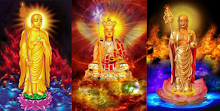



















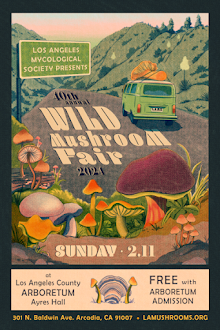















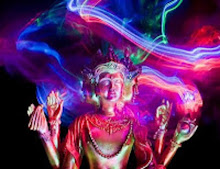









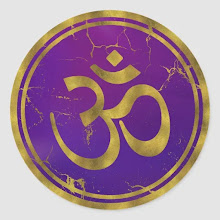





















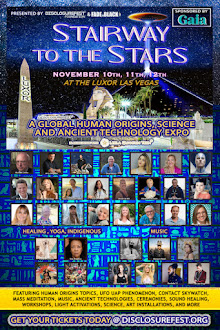
























































































































































No comments:
Post a Comment